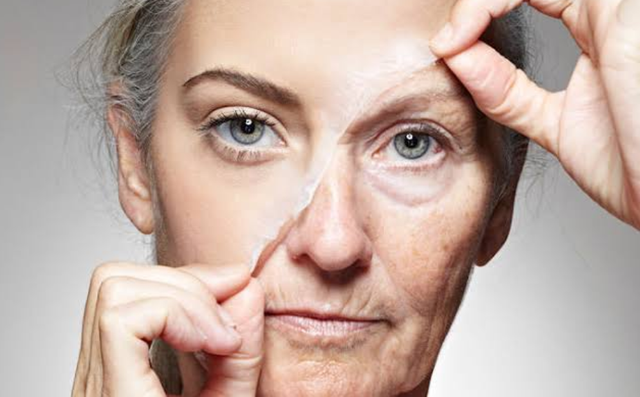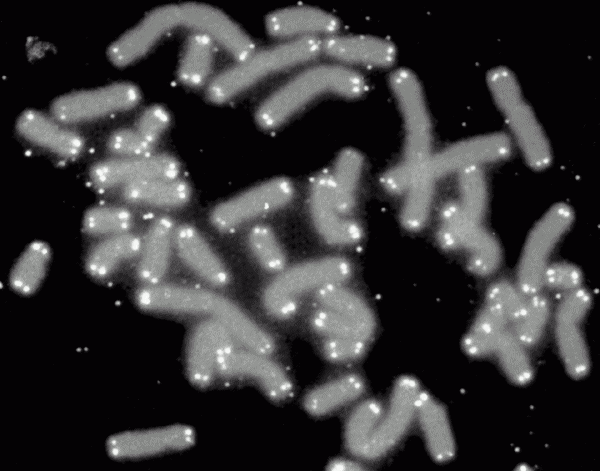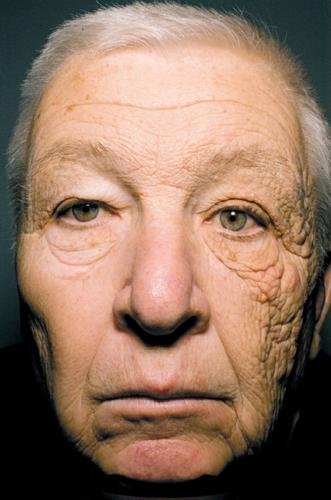Why We Grow Old And Die (part 1)

Most people accept that getting old is an inevitable part of life. We are born; we grow to become fertile adults, and then our bodies age until they expire at an average age of 80 for men and 84 for women in British Columbia. As we age, some of the inevitable symptoms include graying and thinning hair, loss of fertility, weakening bones, decreased brain function and losing our ability to hear and focus our eyes. But why does this happen? Why don’t our tissues continue regenerating forever?
None of us are spared from physical aging, however single celled organisms do not age as we do. Amoebas and bacterium will live for a time and then split into two daughter cells without deteriorating. These single celled organisms never lose the ability to proliferate. On the other hand, human cells only have the ability to divide about 50 times before dying.
Many proposed mechanisms of aging have been brought forth since the early 1950s to make sense of this aging process that leads us all to our death. Scientists have divided these proposed causalities of aging into two categories: programmed and damage related. Programmed factors happen as a result of cells failing to divide properly over time. Damage Related factors are attacks from the environment, or from our bodies' wear and tear damage that accumulates over time.
Programmed Cellular Factors

Fig 1: Chromosomes (grey) shown with their telomeres (white dots) at the end.
Telomere shortening is one well-known factor that leads to our cells losing the ability to divide. Our DNA is stored as tightly wrapped strands which form structures called chromosomes. Telomeres are located at the very end of chromosomes, seen as bright dots in the image above, and are made up of DNA that is not used in our genome. When our cells divide, the DNA in the cells must be copied, but the copying mechanism isn’t perfect and it misses some of the DNA on the end. This is where telomeres save the day, as a little bit of telomere gets cut off instead of our important DNA. However, after enough divisions the telomeres may get totally used up, and stop protecting the important DNA.
Along with losing our ability to divide properly, our immune system becomes less keen over time and loses the ability to decipher the difference between our cells and enemy cells. In moments of confusion, your immune cells may attack your own body in a phenomenon called autoimmunity. As we age, our cells begin attacking themselves, observed particularly in the lungs.
Our cells also are subject to a process called DNA methylation. This involves adding a methyl group (a carbon and 3 hydrogen atoms) to an area of the DNA which sets this area of the gene into “off” mode. This is an important function, as we want to turn off certain genes in certain cell types, and once an area is methylated, the change is permanent. Methylation of DNA slows over time, which creates an aging biomarker, so if we measure how much DNA of an individual has been methylated, we can estimate their biological age. Some genes may also become hypermethylated with age causing them to loose function, such as the estrogen receptor.
Damage Related Factors
We are constantly under attack from our environment, and our bodies accumulate damage over time. Damage affects the DNA, proteins and fats in our body which break down and weaken various components that we need to survive.

Fig 2: Bill McElligott showing uneven sun damamge from driving for long hours.
One symptom very commonly associated with aging is wrinkling. After the age of 20, we produce 1% less collagen in the skin each year which results in skin becoming more brittle over time. However, UV rays from the sun are the much more pressing issue, leading to 80% of skin wrinkling over time. The power of these rays is undeniable after observing the picture above which shows truck driver Bill McElligott who has sustained severe damage on the left side of his face from the unfiltered sun coming through the window of his truck. As far as aging goes, wrinkles are one of the most preventable symptoms—so don’t forget that sunscreen!
Free radicals, a toxic byproduct of cellular metabolism, also play a role in damaging our cells. These highly reactive molecules are missing an electron and will happily remove them from your healthy cells, causing damage. Methods used to try and counteract the damage done by free radicals are not strongly supported by evidence. One theory is to try and reduce the overall number of calories consumed in your lifetime, reducing cell metabolism and reducing the number of free radicals created in the first place. With even less supporting evidence is the idea that consuming foods with antioxidants will help eliminate free radicals in the body. Marketing antioxidants in food supplements represents a $500 million industry despite the lack of scientific backing and some evidence showing that antioxidant supplements can increase your risk of disease.
What about other species?
This question becomes more complex when we compare how other species age. We see that not all species follow the same tendencies as us. On the graphs below, we see our fertility and mortality (or likelihood of dying) displayed over our lifetime. As expected, we see a peak in fertility in our early years, and as we get older see a sharp increase in mortality as we age. We see similar patterns in other mammals, including the chimpanzee displayed next to us, however as we look at the other species displayed we see different patterns arise. For the desert tortoise and the white mangrove tree, the likelihood of death is significantly higher during the younger years and mortality rate decreases as they age.
The Hydra is even more interesting, as we see its mortality and fertility stay constant for centuries, showing no signs of biological or physical aging. Despite our awareness of this creature, scientists are a long way from being able to draw conclusions for what aspects of the immortal Hydra could be applied to slowing human aging. For now we must accept that as humans we will age, but knowing about these detrimental causes of aging may help us slow the more preventable ones.
THANKS FOR READING!
🏥💙♨
Posted from myAirClinic Healthcare App. Download Android Version from PLAYSTORE!
become old and then die, it is a natural law that cannot be avoided, because all who live must experience something similar based on time
We are born here to get old and die but most of the women don't like ageing 😭.
Posted using Partiko Android
@air-clinic You have received a 100% upvote from @intro.bot because this post did not use any bidbots and you have not used bidbots in the last 30 days!
Upvoting this comment will help keep this service running.
Hey @air-clinic! Glad to meet you here! Have you tried Partiko? It’s a really cool Steem app! You download it, login using your Steem account, and boom, you can use Steem on your phone!
What’s even cooler is that they reward you Partiko Points for using it, and you can cash it out for STEEM!
Join using this link: https://partiko.app/referral/vintage-m , and you will get 1000 Points as a bonus! Let’s see who can reach 30000 Points first!